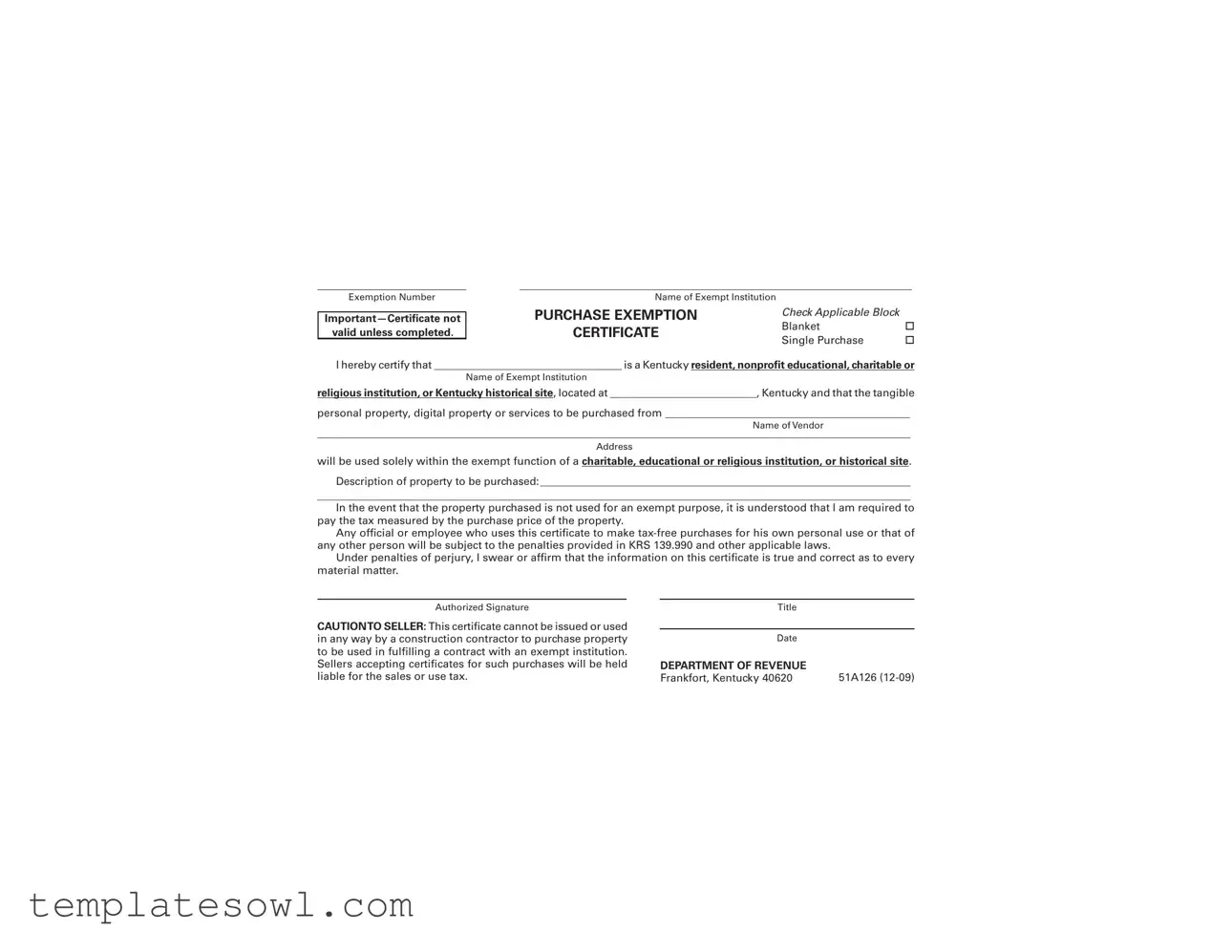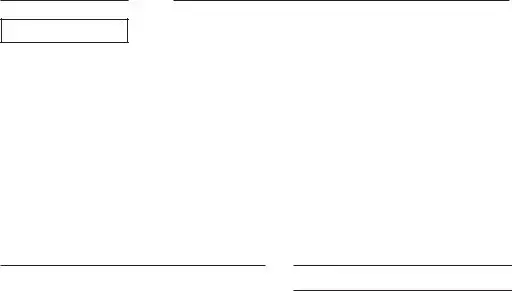What is the purpose of the 51A126 form?
The 51A126 form serves as a certificate of exemption for certain nonprofit organizations in Kentucky. It allows qualified institutions to purchase tangible personal property, digital property, or services without paying sales tax, given that these items will be used solely for their exempt purposes, such as educational, charitable, or religious activities.
Who can use the 51A126 form?
This form can be utilized by Kentucky residents who are part of a nonprofit educational institution, charitable organization, religious institution, or a Kentucky historical site. It's important that these entities meet specific qualifications to ensure they are eligible for tax exemptions on their purchases.
Is the 51A126 form valid for all types of purchases?
No, the 51A126 form is not valid for all purchases. It is specifically designed for items that will be directly used in fulfilling the exempt functions of the institution. Additionally, construction contractors are prohibited from using this exemption form for materials purchased in relation to contracts with exempt institutions.
What happens if the purchased property is not used for an exempt purpose?
If the property purchased is ultimately not used for an exempt purpose, the institution must pay the tax based on the purchase price of the property. This requirement emphasizes the importance of using the purchased items solely for their intended exempt functions.
What penalties apply if the certificate is misused?
Any official or employee who misuses the 51A126 form to make tax-free purchases for personal use can face penalties. KRS 139.990 outlines the penalties that may be enforced, which can include fines or other legal consequences for violating the regulations regarding tax exemption certificates.
How should the 51A126 form be completed?
To complete the 51A126 form, the institution must fill in their name and address, as well as the name and address of the vendor. The description of the property to be purchased must also be included. The form requires an authorized signature to validate the claim, signifying that the information provided is true and correct.
Where can I find the 51A126 form?
The 51A126 form is available through the Kentucky Department of Revenue's website. You can download and print the form from there, as well as access guidelines for completing it accurately. It's important to ensure that you're using the most recent version to avoid any issues with your exemption claims.

